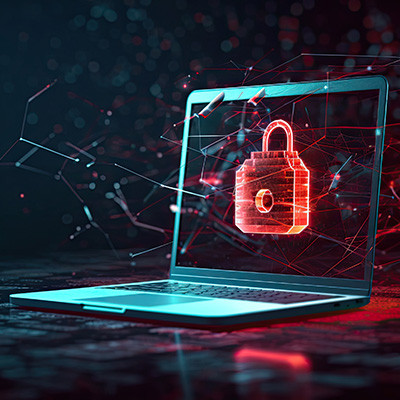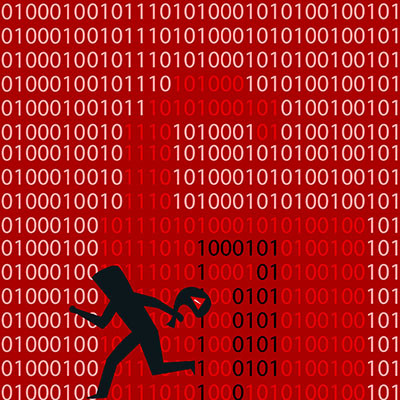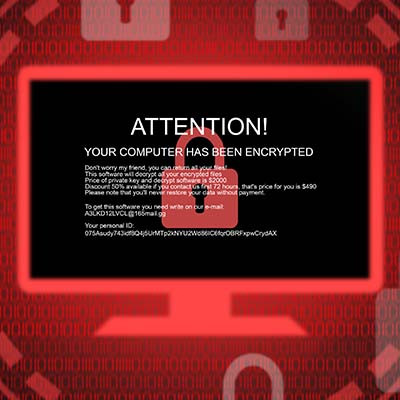We're all busy. Whether you're steering the ship or making sure the daily operations run smoothly, cybersecurity might feel like another drain on your time. Imagine a day when everything grinds to a halt, trust evaporates, or significant money vanishes into thin air. These aren't abstract fears; they are all-too-real consequences of cybersecurity oversights, creating moments that everyone in a business, from top to bottom, desperately wants to avoid… and can.
FRS Pros Blog
Despite some of the headlines that we saw last year, it wasn’t all bad news regarding ransomware. Critically, 2024 saw ransomware payments plummet by hundreds of millions of dollars… despite many large-scale attacks and one record-breaking whaling payment of $75 million by one victim.
This is undeniably great to hear… but with that in mind, we cannot let ourselves slip into complacency.
Businesses have seen an increase in cyberattacks, and this trend is not slowing down in 2025. Today, we want to explore what the future could hold so you can take these insights and apply them to your cybersecurity initiatives in the coming year.
Let’s have a little fun today. Today’s blog post is written in the format of a daytime soap opera. Please make sure you read all of the dialogue as if being whispered by extremely attractive television stars and starlets!
Life goes on in the small town of Oak Falls, deep woods surrounding the little hamlet nestled on the coast of Cape Seguridad. Let’s follow the lives of some of the residents, their lives Of Vice… and Vulnerability.
We’ve spent the last few weeks discussing ransomware's impacts on different subsets. First, we discussed how a ransomware attack impacts the customers of the infected business, and then we touched on the infected business itself. To end, we want to touch on ransomware's impacts on society, specifically regarding economic health and geopolitical security, known as third-order harms.
Last week, we discussed the many impacts your business suffering from ransomware has on “second-order harm,” downstream businesses, and average, ordinary people. This time, we wanted to return to “first-order harms”… those the impacted business has to deal with itself.
It can be too easy to look at ransomware as a business problem. After all, it attacks businesses, locking down their data for ransom, often selling it or spreading it, and sometimes altering it for the business if returning it at all. It can be too easy to overlook another impacted target in all the mess.
What happens to the people whose data a business has collected and uses?
When considering your company’s cybersecurity, it is important not to lose sight of the forest for the trees… or, in other words, not to forget the basics around which the rest of your protections are built.
We’re hoping that you are actually reading this post to prepare yourself if your business were to face a ransomware attack, but if you are suffering from one right now, we encourage you to reach out to us immediately, whether you are a client or not. Ransomware spreads quickly, and once it has infected a system, there really isn’t much you can do to stop it. However, there are steps you need to take to come back from this gracefully.
With ransomware becoming one of the single most dangerous threats out there for small businesses, it’s more important than ever to know how to protect your company from its influence. Thankfully, there are measures you can take, including some very powerful ones like zero-trust policies that can thwart attempted ransomware attacks.
You don’t need us to tell you that ransomware is a problem (or maybe you do–we mean, it’s a huge problem). It’s dangerous to both businesses and individuals, and it has become such a common threat that all organizations need to have a plan in place to address it with their staff. Today, we want to highlight a three-part strategy that you can use to approach ransomware in the most secure way possible.
There are a lot of threats to businesses nowadays, but ransomware seems to be the worst… or at least, the most feared. It seems as though we can’t mention cyberthreats anymore without mentioning ransomware. Unfortunately, we’re right to do so, and the reason for this is a simple one.
Of all the cybersecurity threats out there for your business to contend with, there are going to be a few of them that are just more likely to impact you than others. That’s just a statistical reality. Fortunately, these threats can be addressed, so let’s discuss how you can do so.
Okay, let’s say you’ve been infected by a ransomware attack, and (against our advice) you’ve elected to pay the ransom. That’s the biggest cost that comes with it, right?
Unfortunately, wrong. A ransomware attack comes with a lot more financial impact than just the payment the attacker demands. Let’s go over some of these other costs that can actually outpace that of the ransom.
Let’s begin by making one thing abundantly clear—all businesses and industries could potentially be targeted by ransomware, regardless of their size or target audience. However, as of late, some industries have been targeted more and more. Let’s examine some of the commonly targeted industries that ransomware is frequently waged against.
Network security could mean any number of things, but more often than not, people are using the term as a blanket statement against the dreaded idea of malware and its many forms. Today, we are discussing how vast the world of malware can be and how often you might find yourself misunderstanding what it exactly is. Knowing all this can help you identify if you have become a malware victim or not.
Ransomware is widely regarded as one of the worst modern cyberthreats out there today, and there's plenty of evidence to support this. These attacks and their aftereffects can devastate businesses of all industries. Let's consider why it is that ransomware is so dangerous, and what can be done to fight it.
Ransomware has been commonplace for years, with no sign of it going anywhere anytime soon. Let’s take a few moments to examine the state of ransomware right now, and review how to keep it from impacting your businesses.
There’s no way around it; ransomware is bad stuff, plain and simple. The first half of 2021 saw a massive increase in ransomware attacks that made the lives of countless individuals and business professionals difficult. However, a new trend is surfacing, and it’s one that you might be surprised to see: fake ransomware threats.
While it only makes sense to assume that a cybercriminal would focus specifically on those targets that would bring them the greatest profit—in other words, larger businesses—the reality of modern cybercrime renders this assumption grossly outdated. Let’s examine how different developments in ransomware have made it possible for cybercriminals to be far less discerning in who they target.






















